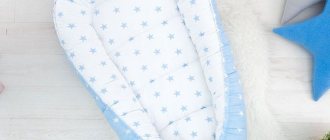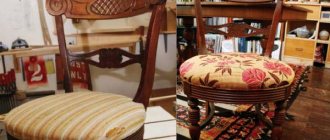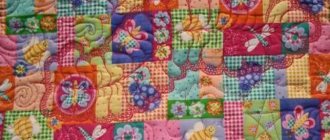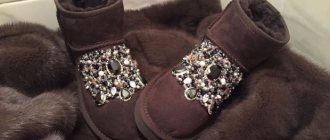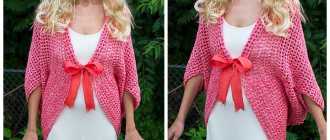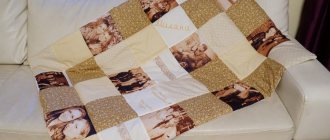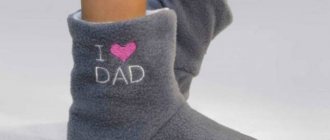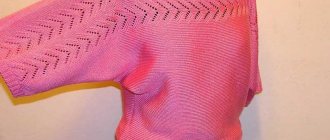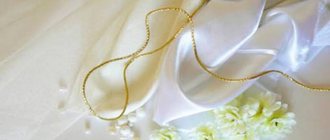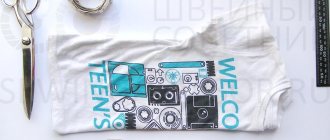Benefits of a cocoon
Benefits of the cocoon diaper
Loose swaddling, which has been increasingly practiced recently, has given impetus to the creation of interesting models for wrapping a baby. The Euro diaper appeared in Russia not so long ago, but has already become quite popular among mothers. The design features of the diaper allow the child to feel protected, which provides him with a more restful sleep.
The diaper itself resembles an envelope with cuffs that allow you to securely fix the baby's arms without hindering his movements. In this swaddled form, the baby somewhat resembles a butterfly pupa. Hence the name of the diaper - cocoon.
The popularity of such “clothes” for newborns lies in its versatility - you don’t have to hide your legs in a pocket, giving them more movement. From time to time, you can also release the baby's arms. The design allows you to conveniently change diapers without completely unswappling your baby.
By choosing cocoon diapers, mom wins in many ways.
- This swaddling is much easier than the classic options, so not only inexperienced mothers, but even fathers who never played with dolls in childhood will quickly master the technical side of the issue.
- The diaper itself can be perfectly transformed to fit any size, which means it is suitable for both a newly born baby and an already grown 3-month-old toddler.
- The cocoon does not restrict the baby's movements, giving him some freedom. At the same time, it reliably holds even the most fidgety babies inside the diaper.
This model makes it easier for the mother to care for her child and makes her life calmer.
How to choose the right cocoon material and size
The cost of the finished product varies over a fairly wide range, and depends on the quality of the material used for its manufacture. This also includes labor, and handmade work is especially valued, so today an increasing number of craftswomen offer their services, presenting very beautiful, original and fashionable mattresses.
If mommy herself is fluent with a needle and thread, then she can easily cope with the task on her own, making a universal device to her liking.
If you wish, you can also try your hand at this as a novice craftswoman, because sewing a cocoon is not anything complicated. The main thing in this matter is to choose high-quality materials, on which the appearance of the finished product will ultimately depend.
The nest cocoon is intended for a baby from birth to 4 months
So, to sew such a mattress, which will ultimately serve faithfully until 4-6 months of age and is perfect for inheritance by other children, you should stock up on the following materials and tools:
- Two pieces of good cotton or other natural fabric measuring 80 by 105 cm.
- A piece of bias tape for processing the base of the cocoon, the size of which is determined by the pattern.
- Hollow fiber for filling sides measuring 40 by 70 cm.
- Foam rubber sheets 4 cm thick for the base. If desired, this part can be made more voluminous and soft by using several identical layers at once, which are easy to glue together, or thicker material.
- Silk ribbon or lace for tightening the sides into a ring and securely fixing them in this position.
- Decor.
- Needles, matching threads, scissors.
In addition, you will need paper for creating a pattern, tailor's pins for attaching it to the back of the fabric, crayons for drawing the main outline and indents for internal seams, a sewing machine, an iron or other available tools.
Fabrics for making a cocoon-nest must be natural
As for determining the optimal size of a homemade nest, there are two main parameters that directly depend on whether the child was born on time or was born before it.
Typically, the height of a mattress for a full-term baby is from 65 to 70 cm with a width of 30-35 cm, although both values can be increased to accommodate an older or larger baby.
A product cut to this size is ideal for children whose body weight ranges from 3 to 6 kg. The second option is best used for the smallest or premature babies, and often it has a height of up to 50 cm and a width of 25-30 cm, being designed for a weight of up to 3 kg.
See also:
DIY massage mats for children - step-by-step production and samples
Model options
Variants of cocoon diaper models
Initially, the cocoon diaper only had Velcro, which clearly fixed the flaps, preventing the baby from getting out. Now there are variations with zippers, and they are structurally slightly different from previous models. Each type of cocoon diaper has its own characteristics, which the mother will have to take into account in order to achieve the desired effect.
- The Velcro diaper is more reminiscent of a cocoon, as it has a small pouch for the legs and two “wings”-flaps that wrap around the baby. This model is transformable, as it easily swaddles a baby during the first 3 months of his life, adapting to the growth and volume of the newborn’s chest. In this case, you can do both tight swaddling and loose swaddling.
- A cocoon with a zipper is closer in design to an envelope for newborns. The clasp makes the model more mobile, which allows you to quickly release the child from the cocoon. The baby's arms are not fixed by swaddling, but move freely inside the envelope. This allows the baby to tilt them up and assume the “butterfly” position.
Both cocoon options are good to use, so mom can buy both models. Or choose the option that is more suitable for the character of her baby. For needlewomen, you don’t have to go to the store, but show your creativity by creating your own diaper model at home.
Simple patterns
There are several elementary incarnations. The pattern of a cocoon diaper for newborns has a number of advantages:
● convenience;
● quick fastening and unfastening.
The base, in most cases, consists of knitwear with different densities, so it is suitable for different seasons. When purchasing, you need to pay attention to two things:
- Turned seams out.
- Additional fabric zipper protection.
The best option! A diaper with a two-way zipper allows you to unfasten the thing from the throat or near the legs.
A cocoon with Velcro or buttons is a kind of pocket that is wrapped in two sheets to fix the baby’s pose. The two panels seem to “hug” the child, secured with the help of the specified clamps.
Envelope. Unlike the previously described diapers, this type is equipped with “legs”. Just like in the second option, the diaper is wrapped around the baby, secured with fasteners - a kind of “seat belts”.
A beautiful option for a diaper with a zipper
DIY cocoon
DIY Euro diaper
If a woman knows how to sew, she will definitely take advantage of a pleasant opportunity to dress up her little one. It will not be difficult for her to make a cocoon for newborns with her own hands, choosing bright material with a “cheerful” pattern. For those who want to create, below is a diaper pattern, which will make it easy to make a beautiful and comfortable product.
Diaper with zipper
Fig. 1 – Cocoon envelope
Pattern of a cocoon diaper with a zipper
The proposed model of a cocoon diaper will have a zipper, and it is much easier for novice needlewomen to sew than the version with Velcro.
Velcro diaper
A more experienced seamstress will easily master the Velcro diaper pattern. If for the previous model the template is given in one piece, then in this case 2 patterns are offered - the main part and the pocket for the legs.
Fig. 2 – Large part
Fig. 3 – Leg pocket
When cutting out blanks, the template should be laid on the wrong side of the fabric, not forgetting to make seam allowances. It is important to accurately mark the locations for attaching the Velcro. When transferring a pattern onto fabric, it is better to use a washable marker (or the old fashioned way - draw with a thin piece of soap).
Requirements
Newborns and breastfed babies require special care, since babies have very delicate skin and an unformed body. The immune system is unable to cope with viruses and bacteria, and touches are perceived 10 times more delicately.
The fabric should be hypoallergenic so that delicate skin does not suffer from rashes
Therefore, before sewing, you need to pay attention to several points:
- The seams are placed on the front side of the diaper.
- No protruding threads. Any loose thread, when stretched, can easily scratch or even cut delicate skin.
- The textiles used are made exclusively from natural elements.
- No decorative details.
You might be interested in Interesting and simple patterns of overalls for dogs
Attention! If you use a cocoon diaper for newborns (pattern with a zipper), it is important to consider the location of the zipper - the hard part of the fastener causes discomfort for the baby, so it is better to sew it on the front part.
If you take into account all the previously mentioned points, you can remain confident in the safety and comfort of the child.
Sewing tips
Sewing tips
In order for a newborn to feel comfortable in such a diaper, when preparing for sewing, you should take into account some aspects of needlework.
- It is better to take natural fabric, without synthetic additives. At the same time, it should stretch well. Knitwear with natural cotton is perfect.
- The width of the fabric should be such that it can be folded in half - extra seams are not desirable.
- The length of the material must be at least 1.2 m so that the pattern is made in one piece and corresponds to the height of the baby with a margin.
- When connecting the pattern pieces, you should not make seams that involve folding the fabric - these scars will interfere with the baby.
- All seams, as well as the zipper, must be on the outside of the cocoon diaper. A zigzag stitch will help make these elements decorative.
An experienced craftswoman will spend no more than an hour and a half on making such a necessary item for swaddling a baby. Beginning needlewomen just need to show maximum diligence and do the work slowly to get an original, comfortable cocoon. But a baby wrapped in such a diaper will be the most beautiful.
How to sew a waterproof layer to a diaper
Very easy if you follow the step by step guide. First you need to prepare waterproof fabric and bias tape. Now the following steps take place:
- Stop at the moment of processing the edges. Cut a piece from the prepared material that will fully correspond to the size of the future diaper.
- Sew the two elements together inside out.
- Finish the corners with bias tape.
- Turn the product inside out, finishing the seams and edges.
- Iron the diaper.
How to sew a waterproof film to a cocoon
Video tutorials on knitting an envelope for a newborn
Envelope with buttons
Knitted envelope for a newborn, for a child's height 50-54 cm, with buttons for height adjustment, made of YarnArt Jeans Plus yarn (55% cotton, 45% polyacrylic, color 68), on 3.5 mm knitting needles.
The video should load here, please wait or refresh the page.
Envelope with aran knitting needles, part 1
Size: for newborns from 0 to 6 months.
A convenient and practical thing, you can use it at home, on the street, in the clinic. Your baby will always be warm. You will need knitting needles No. 3.5 and 4.5; Australian Merino yarn 400m/1100g, 95% wool, 5% acrylic, 2 threads, white color. Consumption 400-450 g. The yarn is soft, does not stretch after washing, and retains its shape. The video should load here, please wait or refresh the page.
Recommendations for sewing a winter envelope
- The pattern must correspond to the purpose of the envelope. For walking in a stroller, you need to add a mattress insert in the back in the form of a pocket;
- It is more rational to sew a transforming envelope from which a blanket is made;
- For warm envelopes for a newborn, only natural fur fabric, cotton, cambric, flannel or calico (inner layer), plush, velvet or flux (outer layer) are suitable;
- For additional insulation, padding polyester, woolen fabric or holofiber are placed in the inner layer of the envelope;
- The standard envelope size is 180x150 cm;
- The zippers on the envelope should not come apart on their own;
- Fur is considered the most environmentally friendly and heat-saving material for winter envelope options.
- For the little ones, it is better to sew a cocoon envelope that can swaddle their hands. This way the child will not unravel and harm himself;
- For children born in the middle of winter, envelope size 62 is suitable, and for autumn newborns - size 68, if parents decide to buy a ready-made option;
- The envelope must match the size of the child, so that there is not much free space inside and the baby is tightly wrapped;
- Warm envelopes for newborns can be crocheted or knitted if the mother has a little needlework skills and patience.
Knitting an envelope (cocoon) for a newborn, ideas from the Internet
Interesting descriptions and master classes that we were able to select for this article.
Master class on how to knit an envelope for a newborn
Author Olesya Maksimova.
- Spokes: No. 4.5
- Threads: 100gr./200m. (3 skeins)
- Knit from bottom to top.
- Alternating stripes:
- 2 p. knitting, knit 4, purl 4, knit 6 Repeat 4 times.
Step-by-step description of the envelope at the link
Knitted envelope for newborns
An envelope with buttons for a newborn, with raglan sleeves and a hood, knitted.
Age: 0-6 months.
You will need: Merino yarn (50% wool, 50% acrylic, 200 m/100 g) – 400 g blue, knitting needles No. 3, hook No. 3, 16 buttons.
Step-by-step description of the envelope and diagram
Knitting cocoon for a newborn
Everyone chooses threads according to their own taste, but we think not only about beauty. In my version it is Puffy fine (ALIZE) 50% viscose 50% acrylic meter: 100 g. 440 m. They are very soft pastel shades, knitted in 3 threads.
Online knitting at the link
Two knitted envelopes for a newborn
Description and patterns for knitting an envelope for a newborn
Knitted Strawberry envelope for a newborn
A warm and comfortable cocoon for wrapping your newborn baby. Detailed description of knitting.
Dimensions: Approximately 51cm all around x 56cm long.
Materials: yarn: Bernat® Softee Baby (140 g/5 oz; 361 m/395 yds) – 100% acrylic:
- Main color (30424 Soft Red) – 1 skein
- Contrasting color (30233 Fresh Green) – 1 skein
- Black thread for embroidery.
Circular needles 60 cm long: size 3.75 mm (US 5) and 4 mm (US 6) or other needle sizes to obtain the required knitting density.
Detailed description and diagrams
Knitted red and striped envelopes for newborns
Red envelope with a hood with buttons, knitted for age: 0-6 months.
You will need: “Crossbred Brazil” yarn (50% wool, 50% acrylic, 490 m/100 g) – 500 g red, circular knitting needles No. 3 and No. 3.5, 5 buttons.
Description and patterns of knitting an envelope for a newborn
Envelope for a newborn with an ornament
Size: from 0 to 5 months, for newborns.
You will need: 150 gr. YarnArt Merino Bulky yarn (50% wool, 50% acrylic, 100m/100g) salmon color, 50g of the same white yarn, knitting needles No. 6.5, hook No. 4.
Description and patterns of knitting an envelope for a newborn
Knitted sleeping bag for a newborn baby
Size: for 6 months.
description and knitting patterns for an envelope
Comfortable knitted sleeping bag/envelope for a newborn
Bag dimensions: 68-80 cm.
You will need
- 350 g blue Limbo yarn (100%
- sheep wool, 125 m/50 g);
- knitting needles No. 3.5 and No. 4 and clasp
- zipper 60 cm long.
Description and knitting patterns
Knitted wool envelope for a newborn
Sizes: 56-68 and 74-86 (corresponds to the height of a newborn child).
You will need: Schoppel-Wolle “Reggae” yarn (100% merino wool, 100 m/50 g) – 250 (350) g sand color No. 0120: straight knitting needles Prym No. 4,5 and 5.
Step-by-step description and diagrams
Knitting an envelope for a newborn
Size: 50-56.
You will need: yarn (55% wool, 33% acrylic, 12% Kashmir wool; 125 m/50 g) – 350 g yellow.
Knitting needles No. 3; short circular needles No. 3; stocking needles No. 3 and 4; hook number 3.
2 buttons and elastic band.
Description and knitting patterns
Sleeping bag for a newborn baby
Size: from 0 to 8 months.
For knitting you will need: 650 g of apricot Merino yarn (100% merino wool, 120 g/50 m), straight and circular knitting needles 3.5; fastener – zipper 75 cm long.
Description and patterns of knitting an envelope for a newborn
Knitted envelope for a newborn with an ornament
Knitted bunny envelope for a newborn
Size: for baby from 0 to 3 months. You will need: 300 g of yarn; detachable zipper 50 cm long; knitting needles No. 4; hook number 2.
DESCRIPTION OF WORK
Having folded the auxiliary end of the thread in half, cast on 77 sts on the knitting needles, knit 5 r. with a 1×1 elastic band, make 4 buttonholes (1 p., yarn over 2 p. together). Knit another 6 rows with an elastic band. Next, knit according to the pattern until the armhole is 45 cm.
Option 1: Blanket envelope for discharge
An excellent option for discharge from the maternity hospital is a blanket envelope. Subsequently, it can be used as a blanket for a crib or stroller.
To sew such an envelope we will need: 2 types of cotton fabric, padding polyester (the density of padding polyester depends on the season for which the envelope is sewn), lace. Instead of padding polyester, alpolux or sheet holofiber are also suitable.
We cut out squares of fabric and padding polyester, measuring 100x100 cm.
First, we take a square of fabric for the front side of the envelope and padding polyester and pin them together.
Then we sew several lines on the machine diagonally or in the form of some kind of pattern, connecting the fabric and padding polyester together.
We sew lace to the edges of this square, as shown in the photo.
Now we place the second square of fabric with the right sides facing each other and sew along the entire edge, sewing together all the layers (fabric, lace, fabric, padding), leaving about 10 cm unstitched.
Through this hole we turn the blanket envelope right side out.
We manually sew up the hole through which we turned it inside out.
It turns out to be such a blanket-envelope for newborns when they are discharged from the maternity hospital.
You can sew a bow like this with an elastic band to it (the master class will be in the next article within 2-3 days).
For a boy, you can sew an envelope without lace. I sewed the bow without holofiber, like a bow tie.
